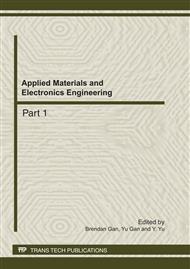[1]
Gabi Ben-Dor. Shock wave reflection phenomena, 2nd edition, (2007).
Google Scholar
[2]
Skews BW. The perturbed region behind a diffracting shock wave. J Fluid Mech 1967; 29: 705–19.
DOI: 10.1017/s0022112067001132
Google Scholar
[3]
Oertel Sr H, Oertel Jr H. Optische strömungsmeßtechnik. Karlsruhe: Braun Verlag; (1988).
Google Scholar
[4]
Diffraction of strong shocks by cones, cylinders and spheres. J Fluid Mech 1960; 10: 1–116.
Google Scholar
[5]
Ripley R. C., Lien F. -S., Yovanovich M.M., Numerical simulation of shock diffraction on unstructed meshes [J]. Computers & Fluids, 2006, 35: 1420-1431.
DOI: 10.1016/j.compfluid.2005.05.001
Google Scholar
[6]
Boden EP, Toro EF. A combined Chimera-AMR technique for computing hyperbolic PDE's. In: CFD 97 Proceedings; 1997. p.5. 13–5. 18.
Google Scholar
[7]
Sun M, Takayama J. A simple smoothing TVD scheme on structured and unstructured grids. In: Toro EF, chair. Godunov methods: theory and applications. Oxford University, 18–22 October (1999).
DOI: 10.1007/978-1-4615-0663-8_84
Google Scholar
[8]
E.F. Toro, Riemann solvers and numerical methods for fluid dynamics, third ed., Springer, (2009).
Google Scholar
[9]
E.F. Toro, M. Spruce, W. Speares, Shock Waves 4 (1994) 25–34.
Google Scholar
[10]
Jiang G S, Shu C W. Efficient implementation of weighted ENO schemes. Journal of Computational Physics, 1996, 126(1): 202―228.
DOI: 10.1006/jcph.1996.0130
Google Scholar
[11]
Chen S, Merriman B, Osher S, et al. J Comput Phys, 1997, 135(1): 8―29.
Google Scholar
[12]
Fedkiw R P, Aslam T, Merriman B, Osher S. A non-oscillatory Eulerian approach to interfaces in multimaterial flows (the ghost fluid method). Journal of Computational Physics 1999, 457—492.
DOI: 10.1006/jcph.1999.6236
Google Scholar
[13]
Hu P, Flaherty J.E., Shephard M.S. Solving fluid/ rigid body interaction problem by a discontinuous Galerkin level set method. SIAM Journal of Scientific Computing, 2005, 22: 1-19.
Google Scholar
[14]
Quirk JJ. Int J Numer Methods Fluids 1994; 18(6): 555–74.
Google Scholar
[15]
Dyment, A., Ducruet, C.; Gryson, P.; Pegneaux, JC. Separated flow around cylinders. Marseilles, France, (1980).
Google Scholar


